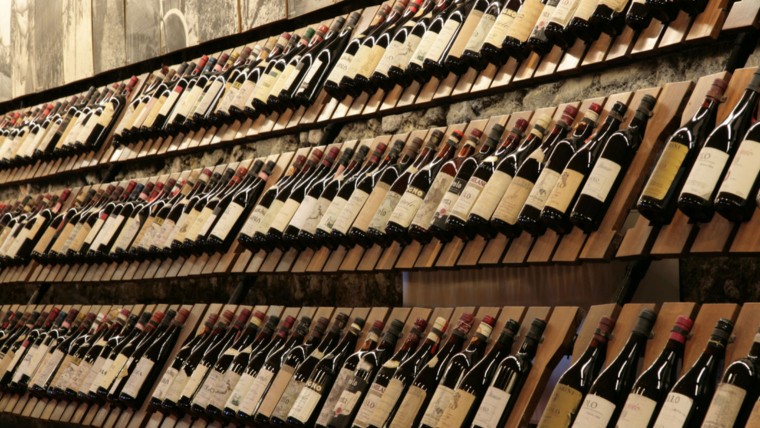Savouring a glass of fine wine, opening up a powerful engine on an empty motorway or hanging the perfect painting over the mantelpiece – if you could capture those feelings and sell them, you would never call your broker again.
The good news is that you can capture them or at least people’s desires for them. The bad news is your broker is still likely to be taking your calls.
While multi-million-dollar deals continue to see Gaugins, bottles of 1982 Margaux and Shelby Daytona Cobras change hands, those with more modest appetites have been accessing these markets too.
Low interest rates hitting cash savers and European equity markets failing to boost portfolios – the FTSE 100 made a loss of 2.71 per cent in 2014 – have made owning tangible assets increasingly popular. However, if you thought stock and bond-picking was tricky, in the world of art, cars and wine, it pays to be even more discerning.
Sotheby’s sold the Romanée-Conti Superlot from Burgundy for just over £1 million - equivalent to £1,000 a glass
For example, Bordeaux, which has traditionally produced the best returns for wine investors, has spent the last couple of years in the doldrums.
“There was a buzz around 2009 and 2010 vintages,” says Stephen Mould, European head of Sotheby’s wine department, “but prices have since come down. This has meant that other regions have attracted attention.”
WORLD RECORD
Sotheby’s broke the world auction record for the most expensive wine lot last year and it wasn’t for selling a Bordeaux. It sold the Romanée-Conti Superlot from Burgundy for just over £1 million, equivalent to £1,000 a glass.
“There has been huge price uplift for wine from other regions,” says Tom Mann, director at LHK Fine Wines, an independent merchant. He points to this change in market sentiment as a good reason to use reputable, established dealers. “Under no circumstances should people respond to cold calls from purported experts or salesmen,” Mr Mann warns. “They are usually rogue sellers who go through shareholder lists and hope to hit lucky.”

Investments in collectable wines has experienced a cumulative 5-year return of 38 per cent on average
Using a reputable dealer will give investors a keener eye to where they are likely to come out on top as there are many factors to consider: the buoyancy of the resale market, when a wine will hit its prime and actions by chateaux to increase production or price. Even with the most accurate information though, due to the whimsy of tastes, this is not an exact science.
“It is difficult to quantify returns from wine investment,” says Mr Mould. “But in the most liquid markets, such as Bordeaux, it could be expected certain vintages would make two to three times their purchase price over ten years.”
Investors must also take into account the cost of storing the wine either in their own or specialist facilities. If you buy multiple cases, drink some and sell the rest to finance that consumption, without being out of pocket, you are doing well, according to Mr Mann.
PLEASURE NOT GAIN
Taking pleasure rather than financial gains from your investments is also a strong consideration in the classic car market, says James Knight, international director of motoring at Bonhams. He sees this market as one for the “enthusiastic hobbiest” rather than the return-seeking investor.
“That’s not to say that money cannot be made,” he adds, noting interest has rocketed since the financial crisis. In 2000, hammer or total sales amounted to $136 million, according to Bonhams. By 2009, this had increased to $421 million, but by 2013 hammer sales hit $1.6 billion.
“In 2008-9, a lot of people wanted to get their money out of banks and turned to tangible assets,” says Mr Knight. “Cars have worldwide appeal and international buyers used currency fluctuations to get more for their money.”
While volumes increased, as many owners chose to make the most of a demand-driven market, prices remained stable rather than falling as might have been expected.
At the top end, however, there has been significant inflation. Bonhams holds the world record for the most valuable car ever sold at auction: a Ferrari 250 GTO sold in 2014 for $38.1 million.
The asset class that may be most at the will of flights of fancy is art, due to shifting tastes and fashion. But despite the changing fortunes of different styles, returns from art investment as a whole have remained relatively stable.

A Ferrari 250 GTO was sold at an auction for a world record $38.1 million
Data from one of the few dedicated sources tracking the sector, the Mei Moses All Art Index, shows over the 50 years to the end of 2012 investing in art would have given a better return than holding the FTSE All Share, but worse than holding the S&P 500.
Art auction returns closely shadow equity markets more generally, as might be expected when fortunes ebb and flow, but the data monitors say that as an asset class, equities have outperformed over the last 30 and 50 years.
Experts reiterate that investing in these niche markets is not without substantial risks and, if you are neither already a fan nor receiving trusted, detailed advice, it is best not to play in them.
But if you can cope with having to make an addition to your household, rather than a boost to your portfolio, you may end up winning in the long run.
Cumulative 10-year returns for passion investments






